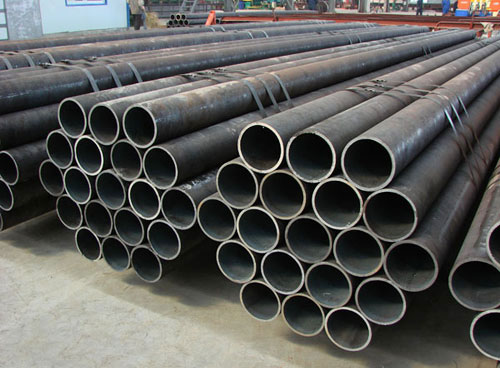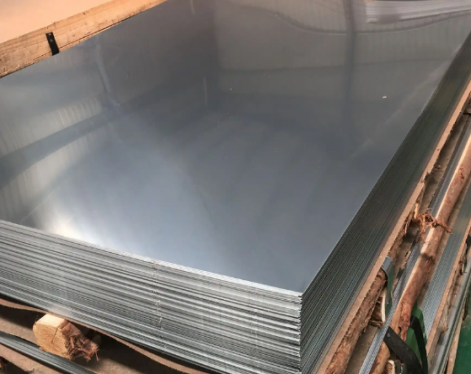Low-temperature carbon seamless steel pipe is a seamless steel pipe suitable for -45℃~-195℃ low-temperature pressure vessel pipes and low-temperature heat exchanger pipes. Low-temperature carbon seamless steel pipe is a medium-carbon structural steel. It has good performance in both cold and hot heating and low-temperature steel pipes, has good mechanical properties, and is low in price and wide in source, so it is widely used. Its biggest weakness is low hardenability, and it is not suitable for workpieces with large cross-sectional dimensions and relatively high requirements.
Executive standard
ASTM A333--Seamless and Welded Steel Pipe for Low-Temperature Service
Heat Treatment of Low Temperature Carbon Seamless Steel Pipe
The quenching temperature of low-temperature carbon seamless steel pipe is A3+(30~50)℃. In actual operation, the upper limit is generally taken. A higher quenching temperature can accelerate the heating speed of the low-temperature steel pipe, reduce surface oxidation, and improve work efficiency. In order to homogenize the austenite of the workpiece, sufficient holding time is required. If the actual furnace load is large, it is necessary to extend the holding time appropriately. Otherwise, insufficient hardness may occur due to uneven heating. However, if the holding time is too long, the disadvantages of coarse grains and serious oxidation and decarburization will also appear, which will affect the quenching quality.
Because of the low hardenability of low-temperature carbon seamless steel pipes, a 10% brine solution with a large cooling rate should be used. After the workpiece enters the water, it should be hardened, but not completely cooled. If it is cooled thoroughly in salt water, the workpiece may crack. This is because when the workpiece is cooled to about 180 °C, austenite rapidly transforms into martensite, resulting in excessive structural stress. Therefore, when the quenched low-temperature carbon seamless steel pipe is quickly cooled to this temperature range, a slow cooling method should be adopted. Since the water outlet temperature is difficult to control, it must be operated by experience. When the shaking of the workpiece in the water stops, the water outlet can be air-cooled. In addition, it is advisable to move the workpiece into the water rather than static, and it should move regularly according to the geometric shape of the workpiece. The static cooling medium and the static workpiece lead to uneven hardness and uneven stress, resulting in large deformation and even cracking of the workpiece.

The hardness of the quenched and tempered parts of low-temperature carbon seamless steel pipe should reach HRC56~59, and the possibility of large cross-section is lower. But it cannot be lower than HRC48, otherwise, it means that the workpiece has not been completely quenched, and sorbite or even ferrite structure may appear in the structure. This structure remains in the matrix after tempering, and the purpose of quenching and tempering cannot be achieved.
For high-temperature tempering after quenching of low-temperature carbon seamless steel pipe, the heating temperature is usually 560~600°C, and the hardness requirement is HRC22~34. Because the purpose of quenching and tempering is to obtain comprehensive mechanical properties, the hardness range is relatively wide. However, if there is a hardness requirement, the tempering temperature must be adjusted according to the requirement to ensure the hardness. For example, some shaft low-temperature steel pipes require high strength and high hardness requirements; while some gears and shaft parts with keyways need to be milled and inserted after quenching and tempering, so the hardness requirements are lower. Regarding the tempering holding time, it depends on the hardness requirements and the size of the workpiece. The hardness after tempering depends on the tempering temperature and has little to do with the tempering time, but it must be tempered. Generally, the tempering holding time of the workpiece is always more than one hour.
Executive standard
ASTM A333--Seamless and Welded Steel Pipe for Low-Temperature Service
Heat Treatment of Low Temperature Carbon Seamless Steel Pipe
The quenching temperature of low-temperature carbon seamless steel pipe is A3+(30~50)℃. In actual operation, the upper limit is generally taken. A higher quenching temperature can accelerate the heating speed of the low-temperature steel pipe, reduce surface oxidation, and improve work efficiency. In order to homogenize the austenite of the workpiece, sufficient holding time is required. If the actual furnace load is large, it is necessary to extend the holding time appropriately. Otherwise, insufficient hardness may occur due to uneven heating. However, if the holding time is too long, the disadvantages of coarse grains and serious oxidation and decarburization will also appear, which will affect the quenching quality.
Because of the low hardenability of low-temperature carbon seamless steel pipes, a 10% brine solution with a large cooling rate should be used. After the workpiece enters the water, it should be hardened, but not completely cooled. If it is cooled thoroughly in salt water, the workpiece may crack. This is because when the workpiece is cooled to about 180 °C, austenite rapidly transforms into martensite, resulting in excessive structural stress. Therefore, when the quenched low-temperature carbon seamless steel pipe is quickly cooled to this temperature range, a slow cooling method should be adopted. Since the water outlet temperature is difficult to control, it must be operated by experience. When the shaking of the workpiece in the water stops, the water outlet can be air-cooled. In addition, it is advisable to move the workpiece into the water rather than static, and it should move regularly according to the geometric shape of the workpiece. The static cooling medium and the static workpiece lead to uneven hardness and uneven stress, resulting in large deformation and even cracking of the workpiece.

The hardness of the quenched and tempered parts of low-temperature carbon seamless steel pipe should reach HRC56~59, and the possibility of large cross-section is lower. But it cannot be lower than HRC48, otherwise, it means that the workpiece has not been completely quenched, and sorbite or even ferrite structure may appear in the structure. This structure remains in the matrix after tempering, and the purpose of quenching and tempering cannot be achieved.
For high-temperature tempering after quenching of low-temperature carbon seamless steel pipe, the heating temperature is usually 560~600°C, and the hardness requirement is HRC22~34. Because the purpose of quenching and tempering is to obtain comprehensive mechanical properties, the hardness range is relatively wide. However, if there is a hardness requirement, the tempering temperature must be adjusted according to the requirement to ensure the hardness. For example, some shaft low-temperature steel pipes require high strength and high hardness requirements; while some gears and shaft parts with keyways need to be milled and inserted after quenching and tempering, so the hardness requirements are lower. Regarding the tempering holding time, it depends on the hardness requirements and the size of the workpiece. The hardness after tempering depends on the tempering temperature and has little to do with the tempering time, but it must be tempered. Generally, the tempering holding time of the workpiece is always more than one hour.









